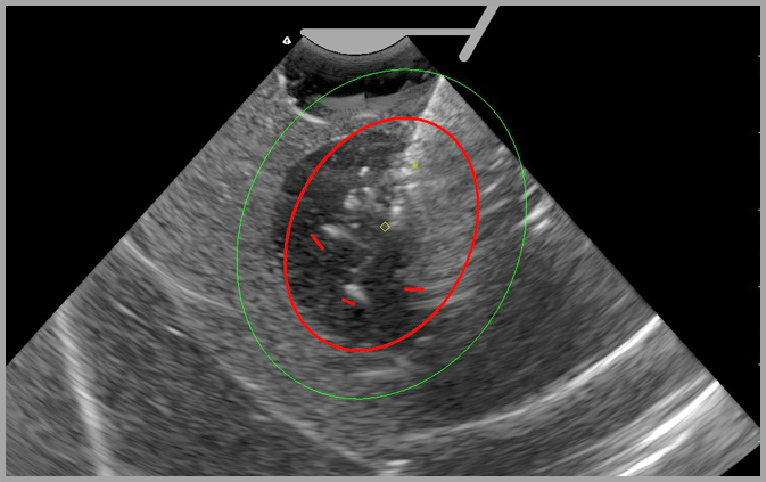Stamford Health first hospital in nation to offer noninvasive uterine fibroid procedure
Women suffering from uterine fibroids traditionally faced undergoing a myomectomy or, in some cases, a hysterectomy ”” or simply just living with the pain and discomfort.
But that could change with a new technology, Sonata, that uses an ultrasound probe that is inserted through the cervix and into the uterus. Once the fibroid is identified, radiofrequency ablation is applied directly to the fibroid without damaging the surrounding tissue. And as opposed to the aforementioned surgeries, the Sonata treatment does not require an incision.
 Approved by the Food & Drug Administration, the Sonata system, developed by women”™s health company Gynesonics of Redwood City, California, is still new enough that doctors at Stamford Health recently performed the first such procedure in the U.S.
Approved by the Food & Drug Administration, the Sonata system, developed by women”™s health company Gynesonics of Redwood City, California, is still new enough that doctors at Stamford Health recently performed the first such procedure in the U.S.
Dr. Scott Chudnoff, chair of the Department of Obstetrics and Gynecology at Stamford Health, was a Sonata trial investigator and lead author of the publication of the final 12-month results of its trial in the January edition of Obstetrics and Gynecology, the official publication of the American College of Obstetricians and Gynecologists (ACOG).
The article detailed the treatment of 147 enrolled patients at 22 outpatient clinical research sites, including 21 in the U.S. and one in Mexico. Highlights from the publication included the following final 12-month outcomes:
Ӣ 99% of patients were free from surgical reintervention for heavy menstrual bleeding.
Ӣ 97% were satisfied with the treatment and would recommend it to family or friends.
Ӣ 96% reported improved symptoms.
Ӣ 95% had a reduction in menstrual bleeding.
Ӣ 65% had at least a 50% reduction in menstrual bleeding.
“A few years ago, Gynesonics reached out to me to get involved with the trial,” Chudnoff said. “It”™s been really exciting to see the results. We were able to complete the first procedure a couple of weeks ago.”
While recovery time for myomectomies and hysterectomies can be two to six weeks and six to eight weeks, respectively, patients undergoing the Sonata procedure can often return to their normal routine the following day, Chudnoff said.
The patient in Stamford”™s procedure “had been experiencing severe bleeding symptoms for weeks on end,” he said. “Afterwards she told us, ”˜I don”™t know what to say. This is the first time the bleeding has stopped in weeks.”™ She’s taken 400 mg of ibuprofen one time since the procedure.”
The process begins with the doctor passing the Sonata treatment handpiece through the vagina and into the uterus. Ultrasound waves from the tip are then used to locate each fibroid, whereupon the handpiece delivers radiofrequency energy to shrink the fibroid and reduce symptoms. The procedure can take a couple of hours, Chudnoff said, depending on the location, size and number of fibroids.
Throughout the procedure, the doctor has a direct visual to the operation via the handpiece”™s camera, which is similar to that employed during various endoscopic operations.
Chudnoff noted that the procedure is only for fibroids located inside the uterus, not those outside it or hanging off of the uterus.
Uterine fibroids are a common, benign condition faced by 25% to 50% of American women, according to the doctor. Symptoms commonly include abnormal bleeding, pelvic pain or pressure and such urinary issues as an increase in frequency or urgency. The majority of women are usually diagnosed in their mid-30s or early 40s, though the condition can impact women in their 20s as well.
Many women do not seek treatment because they are afraid they will need a hysterectomy. Chudnoff noted. The Sonata system represents “a game-changer. It”™s a great option for patients, instead of having to undergo a major surgical procedure. A large number of these women suffer silently, because they”™re not prepared for their entire uterus to be taken out. Now they may not have to.”
Several other women are being screened for the Sonata procedure at Stamford.
“Within the next couple of weeks we will most likely go ahead with the procedures,” he said.
As with any new treatment, prospective patients “have a lot of questions” about the Sonata method, Chudnoff said.
“They can be wary about trying something new ”” especially when it comes to safety,” he continued. “But there is a variety of mechanisms in place to ensure safety, and that is always our top priority.”